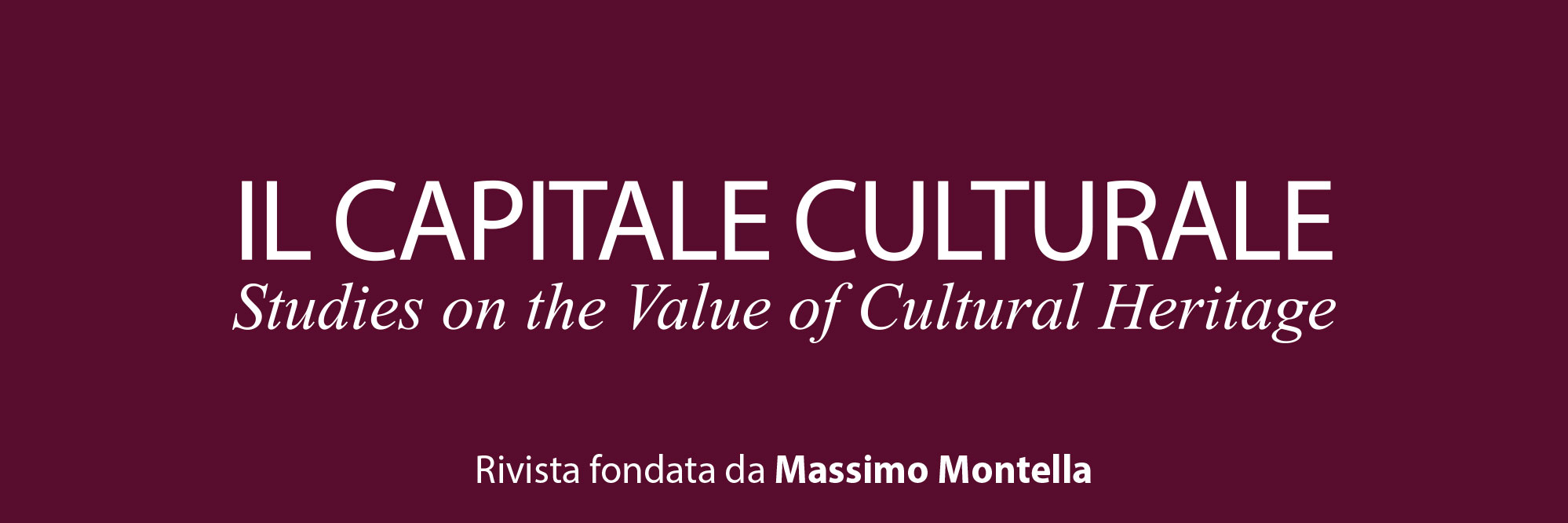L’epigrafia del Ventennio fascista a Roma tra damnatio memoriae, restauro filologico e antecedenti classici / Epigraphy of the Twenty years of Fascism in Rome: damnatio memoriae, philological restoration and classical models.
Downloads
Pubblicato
Fascicolo
Sezione
Licenza
Tutti i materiali pubblicati sono coperti da copyright, mantenuto dall'Università di Macerata che ne supporta finanziariamente e tecnicamente la pubblicazione.
La licenza adottata è la Creative Commons - Attribuzione/Condividi allo stesso modo. Ovvero, gli autori che pubblicano su questa rivista accettano le seguenti condizioni:
- Gli autori mantengono i diritti sulla loro opera e cedono alla rivista il diritto di prima pubblicazione dell'opera, contemporaneamente licenziata sotto una Licenza Creative Commons - Attribuzione che permette ad altri di condividere l'opera indicando la paternità intellettuale e la prima pubblicazione su questa rivista.
- Gli autori possono aderire ad altri accordi di licenza non esclusiva per la distribuzione della versione dell'opera pubblicata (es. depositarla in un archivio istituzionale o pubblicarla in una monografia), a patto di indicare che la prima pubblicazione è avvenuta su questa rivista.
- Gli autori possono diffondere la loro opera online (es. in repository istituzionali o nel loro sito web) prima e durante il processo di submission, poiché può portare a scambi produttivi e aumentare le citazioni dell'opera pubblicata.
DOI:
https://doi.org/10.13138/2039-2362/3113Abstract
Il vasto patrimonio epigrafico, sia in lingua italiana sia latina, prodotto in Italia durante il ventennio fascista costituisce un assai interessante campo di indagine in merito al rapporto con il periodo più controverso e sensibile della storia dell’Italia unita e alla sua rielaborazione pubblica, in virtù della natura intrinseca di scrittura esposta propria di ogni iscrizione. Si presenteranno qui alcuni esempi di iscrizioni di Roma risalenti all’epoca fascista, variamente sottoposte a operazioni di cancellazione, riscrittura o damnatio memoriae e, a volte, di seguente restauro e recupero testuale (non senza casi di travisazioni) per riflettere sulle diverse strategie e i diversi approcci nei confronti dei testi iscritti, anche in rapporto con casi simili tratti dalla storia e dall’epigrafia di Roma antica. Ne emerge una casistica complessa e diversificata, da cui risulta quanto sia spesso difficile la pura e semplice cancellazione dei testi, tanto in virtù del loro portato di testimonianza storica tout court, quanto in virtù della loro specifica natura epigrafica, a volte addirittura monumentale e artistica, oltre che per una carente riflessione collettiva sull’eredità fascista.
The rich epigraphic production, both in Italian and in Latin, made in Italy during the fascist period, is an interesting research field, to study one of the most controversial periods of the Italian history after the year 1860 and its public reception, thanks to the specific nature of “displayed writing” typical of any inscription. There will be presented some examples of fascist inscriptions from Rome, that have been erased, re-written, sometimes restored (not without some misunderstandings) in different ways, with different applications of damnatio memoriae. Aim of the paper is to reflect on the different strategies and approaches towards inscribed texts, also in comparison with similar cases drawn from ancient Roman history and epigraphy. The examples are extremely diverse and complex, since it’s often not easy just removing the texts, given their role as historical witnesses and their nature of monuments and artifacts, not to quote a still imperfect collective reflection about the fascist heritage.
Riferimenti bibliografici
Aicher P. (2000), Mussolini’s Forum and the Myth of Augustan Rome, «The Classical Bullettin» 76, n. 2, pp. 117-139.
Albanese G., Ceci L. (2022), a cura di, I luoghi del fascismo. Memoria, politica, rimozione, Roma: Viella.
Arthurs J. (2014), «Voleva essere Cesare, Morì Vespasiano»: The Afterlives of Mussolini’s Rome, «Civiltà Romana», 1, pp. 283-302.
Bartels K. (2012), Roms sprechende Steine. Inschriften aus zwei Jahrtausenden (4a ed.), Darmstadt/Mainz: Von Zabern.
Benton T. (2000), Epigraphy and Fascism, in The afterlife of Inscriptions. Reusing, rediscovering, reinventing & revitalizing ancient inscriptions, edited by A. E. Cooley, London: Institute of Classical Studies, School of Advanced Study, University of London (Bulletin of the Institute of Classical Studies. Supplement, 75), pp. 163-192.
Billi E. (2021), “Lavori urgenti” e restauri nella Città universitaria di Roma. Caronia, Toesca e il murale di Sironi, in Storie nascoste. Studi per Paolo Simoncelli, a cura di S. Dall’Aglio, A. Guerra, M. Valente, Milano: Franco Angeli, pp. 273-287.
Brancato N. G., Loperfido G. (1999). Roma: iscrizioni dal medioevo al duemila. La storia della città raccontata sui muri. Latina: Il Gabbiano.
Ferraironi F. (1937), Iscrizioni ornamentali su edifici e monumenti di Roma con appendice sulle iscrizioni scomparse, Roma: Industria Tipografica Romana.
Ferraironi F. (1953), Iscrizioni ornamentali di Roma scomparse, «Strenna dei Romanisti» 14, pp. 226-230.
Gentile E. (2007), Fascismo di pietra, Roma-Bari: Laterza.
Krüpke F. (2011), Die Damnatio memoriae: über die Vernichtung von Erinnerung: eine Fallstudie zu Publius Septimius Geta (189-211 n. Chr.), Gutenberg: Computus Druck Satz & Verlag.
Manacorda D., Tamassia R. (1985), Il piccone del regime, Roma: Armando Curcio.
Musarra A. (2022), Scrivere per il “pubblico”. Il mestiere di storico tra divulgazione, terza missione e Public History, in Il Medievista come Public Historian, a cura di E. Salvatori, Roma: Istituto Storico Italiano per il Medioevo, pp. 25-39.
Nastasi A. (2019), Le iscrizioni in latino di Roma Capitale (1870-2018), Roma: Edizioni Quasar.
Östenberg I. (2018), Damnatio memoriae inscribed: The materiality of cultural repression, in The materiality of text. Placement, perception, and presence of inscribed texts in Classical Antiquity, edited by A. Petrovic, I. Petrovic, E. Thomas, Leiden: Brill, pp. 327-347.
Panciera S. (2006), Epigrafi, epigrafia, epigrafisti. Scritti editi ed inediti (1956-2005) con note complementari e indici, Roma: Quasar, pp. 1923-1924.
Ussani V. (1942), Scritti di filologia e umanità. Napoli: Ricciardi.




